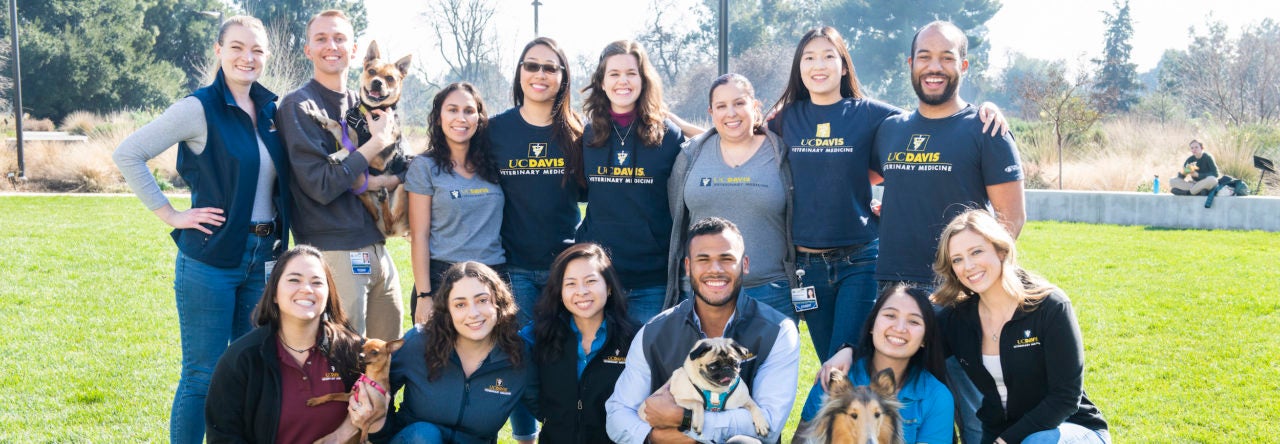“We should not judge people by their peak of excellence, but by the distance they have traveled from the point where they started.” Henry Ward Beecher
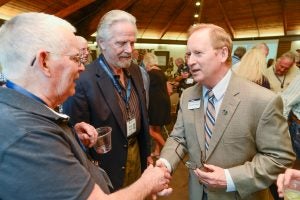 Our recent alumni weekend brought back images of our past and reminders of those that built the foundation of the school. Shaking hands and looking into the eyes of our alumni, I asked many of them the same question: “What were your fondest memories when you were in school?”
Our recent alumni weekend brought back images of our past and reminders of those that built the foundation of the school. Shaking hands and looking into the eyes of our alumni, I asked many of them the same question: “What were your fondest memories when you were in school?”
Many times this question brought a smile to their faces as they reflected on past glory or stories of tough times while facing the rigors of veterinary school. Memories of their classmates or a favorite teacher set off streams of consciousness and snapshots of their lives as students. The short but impactful time our students are with us creates a vibrant tapestry that links them to us as they build their careers as healers of animals and humanity.
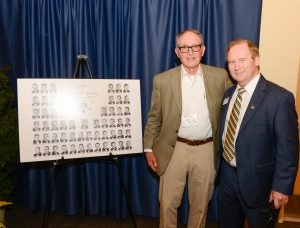 In between alumni tours and lectures, Dr. Robert Bushnell, a member of the Class of 1956, fondly described his time as a student and later as a faculty member in the 1970s. He was fiercely dedicated to improving the lives of dairy cattle and extending that knowledge to his clients. While it was his work that he was describing to me, it was his stories of relationships with classmates, former faculty and staff members that made his eyes moist and his handshake firm.
In between alumni tours and lectures, Dr. Robert Bushnell, a member of the Class of 1956, fondly described his time as a student and later as a faculty member in the 1970s. He was fiercely dedicated to improving the lives of dairy cattle and extending that knowledge to his clients. While it was his work that he was describing to me, it was his stories of relationships with classmates, former faculty and staff members that made his eyes moist and his handshake firm.
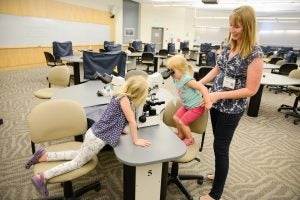 We must sometimes look back to focus on our future. Our school’s history is rich with examples of excellence and innovation in veterinary medicine, and discoveries in biomedical and agricultural sciences. The timeline of these events have been documented in our “History of the School” website. The foundations of our school started well before our official acceptance of the first class in 1948. In the 1930s and 1940s, agricultural producers, legislators and private citizens concerned about diseases of livestock pushed for the establishment of a veterinary school at the University of California. Founding administrators, staff, and faculty led the way in education and discovery, setting the stage for the school’s future.
We must sometimes look back to focus on our future. Our school’s history is rich with examples of excellence and innovation in veterinary medicine, and discoveries in biomedical and agricultural sciences. The timeline of these events have been documented in our “History of the School” website. The foundations of our school started well before our official acceptance of the first class in 1948. In the 1930s and 1940s, agricultural producers, legislators and private citizens concerned about diseases of livestock pushed for the establishment of a veterinary school at the University of California. Founding administrators, staff, and faculty led the way in education and discovery, setting the stage for the school’s future.
 It is fitting that annually we celebrate Dr. Oscar W. Schalm with an endowed lectureship at the time of our alumni reunion. His discoveries improved the management of bovine mastitis and unraveled key physiologic principles of domestic animals. Throughout the 1950s and 1960s landmark discoveries were made by the faculty in fields ranging from microbiology to animal physiology. The 1960s and 1970s continued this path toward excellence as new fields of veterinary medicine were created or expanded by faculty such as Dr. Calvin Schwabe, who established the Department of Epidemiology and Preventive Medicine, the first of its kind in a veterinary school.
It is fitting that annually we celebrate Dr. Oscar W. Schalm with an endowed lectureship at the time of our alumni reunion. His discoveries improved the management of bovine mastitis and unraveled key physiologic principles of domestic animals. Throughout the 1950s and 1960s landmark discoveries were made by the faculty in fields ranging from microbiology to animal physiology. The 1960s and 1970s continued this path toward excellence as new fields of veterinary medicine were created or expanded by faculty such as Dr. Calvin Schwabe, who established the Department of Epidemiology and Preventive Medicine, the first of its kind in a veterinary school.
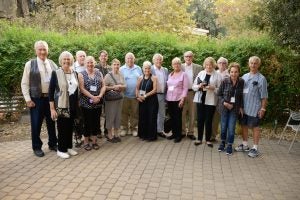 The 1970s brought new faculty, specialties, and innovations such as the first pharmacy based in a veterinary teaching hospital under the direction of Dr. Robert Cello. He would later help establish the novel field of veterinary ophthalmology. During this decade, many new faculty members were hired while Dr. William (Bill) Pritchard served as dean. Examples included Drs. Timothy O’Brien, Roy Pool and John D. Wheat, specialists respectively in equine medicine, bone pathology and radiology, who laid the groundwork for orthopedic research addressing injury problems of performance horses.
The 1970s brought new faculty, specialties, and innovations such as the first pharmacy based in a veterinary teaching hospital under the direction of Dr. Robert Cello. He would later help establish the novel field of veterinary ophthalmology. During this decade, many new faculty members were hired while Dr. William (Bill) Pritchard served as dean. Examples included Drs. Timothy O’Brien, Roy Pool and John D. Wheat, specialists respectively in equine medicine, bone pathology and radiology, who laid the groundwork for orthopedic research addressing injury problems of performance horses.
During this time period, Dr. Murray Fowler initiated a residency program in zoological medicine in cooperation with the Sacramento Zoo and helped create the discipline of zoologic veterinary medicine. The 1980s and 1990s continued this trend of creativity to advance the health of animals and specialization in veterinary medicine. This history created what is today our veterinary hospital’s house officer program, which offers residencies, internships and fellowships, known throughout the world for excellence in specialty training.
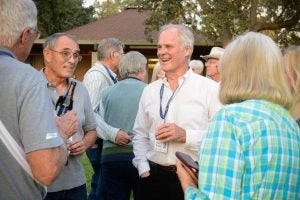 These are only a few examples of the many innovations in veterinary education, research, and service that our faculty, staff, and students contributed to over the decades since the acceptance of the first class in 1948. As our alumni return to us annually to renew bonds among their classmates and reflect on their experiences, we must also take the time to remember those that came before us. Their drive to excellence set us down the path to our current status, far from those humble beginnings. We must honor their legacy by always seeking new ways to understand life’s processes and create new ways to teach the next generation to improve the health of our society.
These are only a few examples of the many innovations in veterinary education, research, and service that our faculty, staff, and students contributed to over the decades since the acceptance of the first class in 1948. As our alumni return to us annually to renew bonds among their classmates and reflect on their experiences, we must also take the time to remember those that came before us. Their drive to excellence set us down the path to our current status, far from those humble beginnings. We must honor their legacy by always seeking new ways to understand life’s processes and create new ways to teach the next generation to improve the health of our society.
